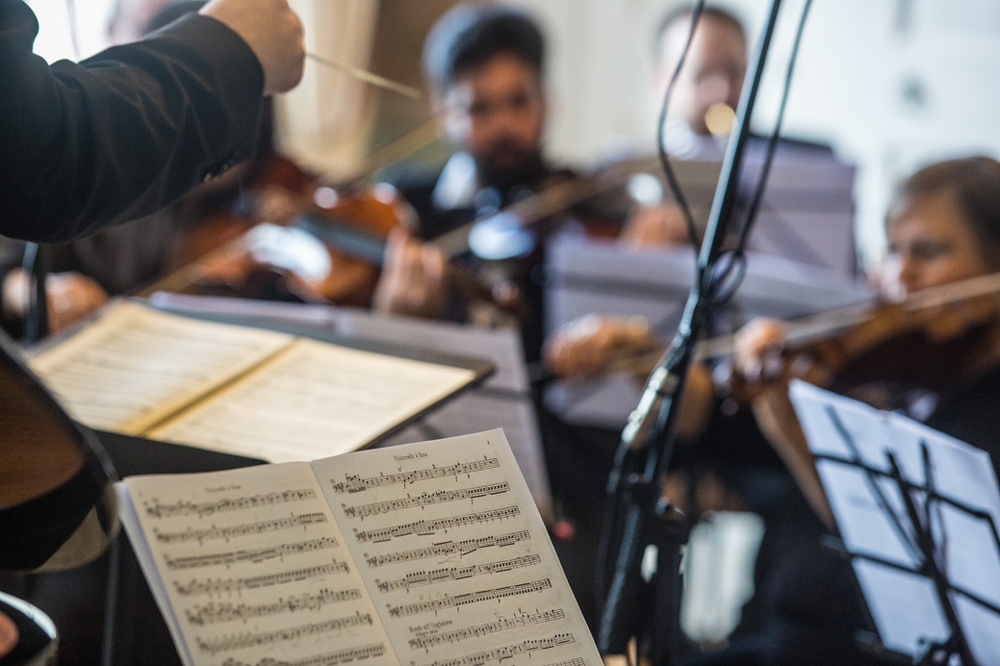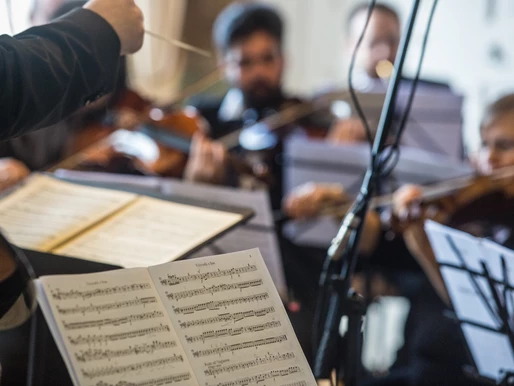Uncategorized
Orchestral Music

Some of the most amazing music of epic proportions that have come from many composers are their orchestral works. Not only demonstrating the understanding of their own instrument that they play; but also the use of other instruments that gives a powerful mix of sound and colour into their output. It stands to reason as orchestral music is the standard for the background of movies, TV series and video games alike as it is one of the few areas of music that tells a story and builds on suspense.
Since the Baroque period- a lot of the sections were identical to now with all strings: violin, violas, celli, double basses plus their woodwind counterparts with oboe bassoon and recorder respectively. Over the ages, the Clarinet was developed and included plus the brass section got a major upgrade by the romantic era (only basic horn type instruments originally in the Baroque).
Composers such as Bach wrote many concertos. Arguably more well known Four Seasons by Vivaldi captures different scenes of the changing weather and wildlife- a kind of 300 year early ‘impressionism’ you could add. We had incredible symphonies by Beethoven, Mozart and Mahler to name a few. The dramatic knocking sound of Beethoven’s Symphony 5 makes it popular and most likely the most famous of all symphonies.
Fast forward later on and music becomes much more of a powerful scene set for an opera or a ballet. Orchestral suites which included a number of different scenes gives a real mixture of moods and takes a break from the strict structures of the symphony (always having 3-4 movements) Notable ones are Griegs Peer Gynt Suite and Bizets Carmen and L’Arlessienne Suites. A must have to listen to. Also later orchestral works by Gershwin such as an American in Paris and Ravel Le Jardin Feerique from Ma Mere l’Oye, Feria from Rapsodie Espagnole and Une Barque sur l’ Ocean from Miroirs gives a breathtaking cinematic experience.
A lot of orchestral music later on also includes the piano. This is a funny area as keyboard instruments were only included before in the Baroque period with the harpsichord. Somehow through the Classical period the keyboard instruments were completely taken out as they only took the place as a solo instrument for a concerto. Having taken roughly a 150 year hiatus, the piano had returned to become part of the Orchestral main repertoire. Saint Saens had included the instrument to give an extra sound effect for his Carnival of the Animals. In particular Aquarium, Fossils and the Lion. Another I recommend is Essays by Barber. An incredible example of including all instruments.
An article about Orchestral music can’t go without a mention of the piano concertos. Mozart wrote a whopping recorded 23 concerti. Haydn concerti- which we are currently playing!- writing more than a dozen, possibly more yet had written 107 symphonies. Beethoven’s 5 Concerti are the cornerstone of any pianists repertoire.
Going into the Romantic concerti where there was a particular boom. Grieg and Schumann remain two paired favourites (with very similar features- and key- Grieg possibly using Schumanns as a rough template). Others like the beautiful bel canto style taken by Chopin, the fireworks of Liszt, Brahms, Saint Saens, and the powerfully epic ones by Prokofiev and Rachmaninoff. Ravel has a jazzy version tied with his evocative atmospheric style with an unforgettable second movement. While Gershwin, Bartok and Barber give an exciting tour of the 20th century.

